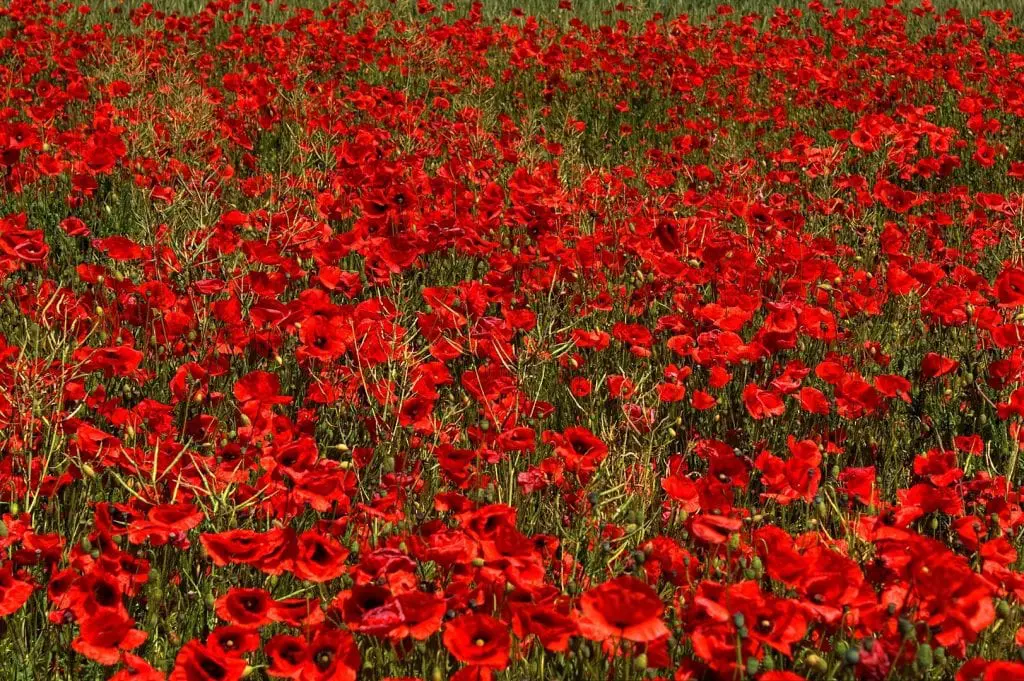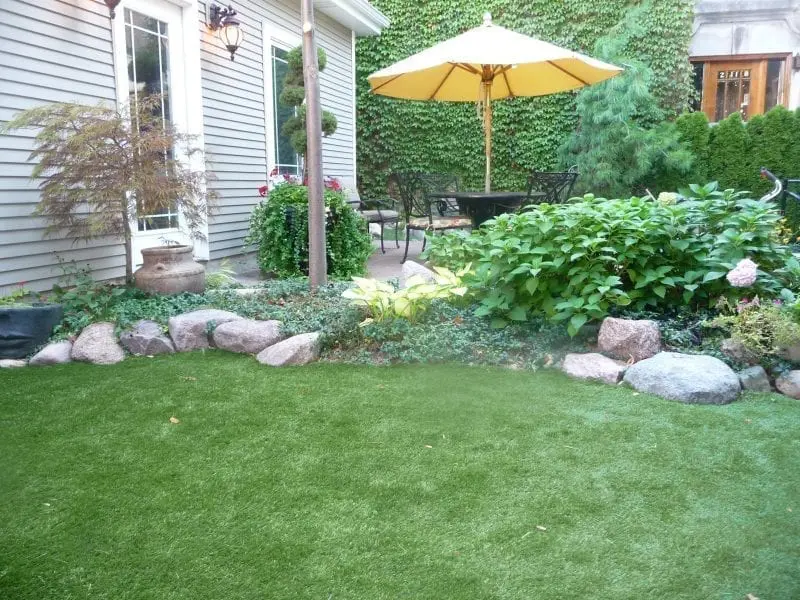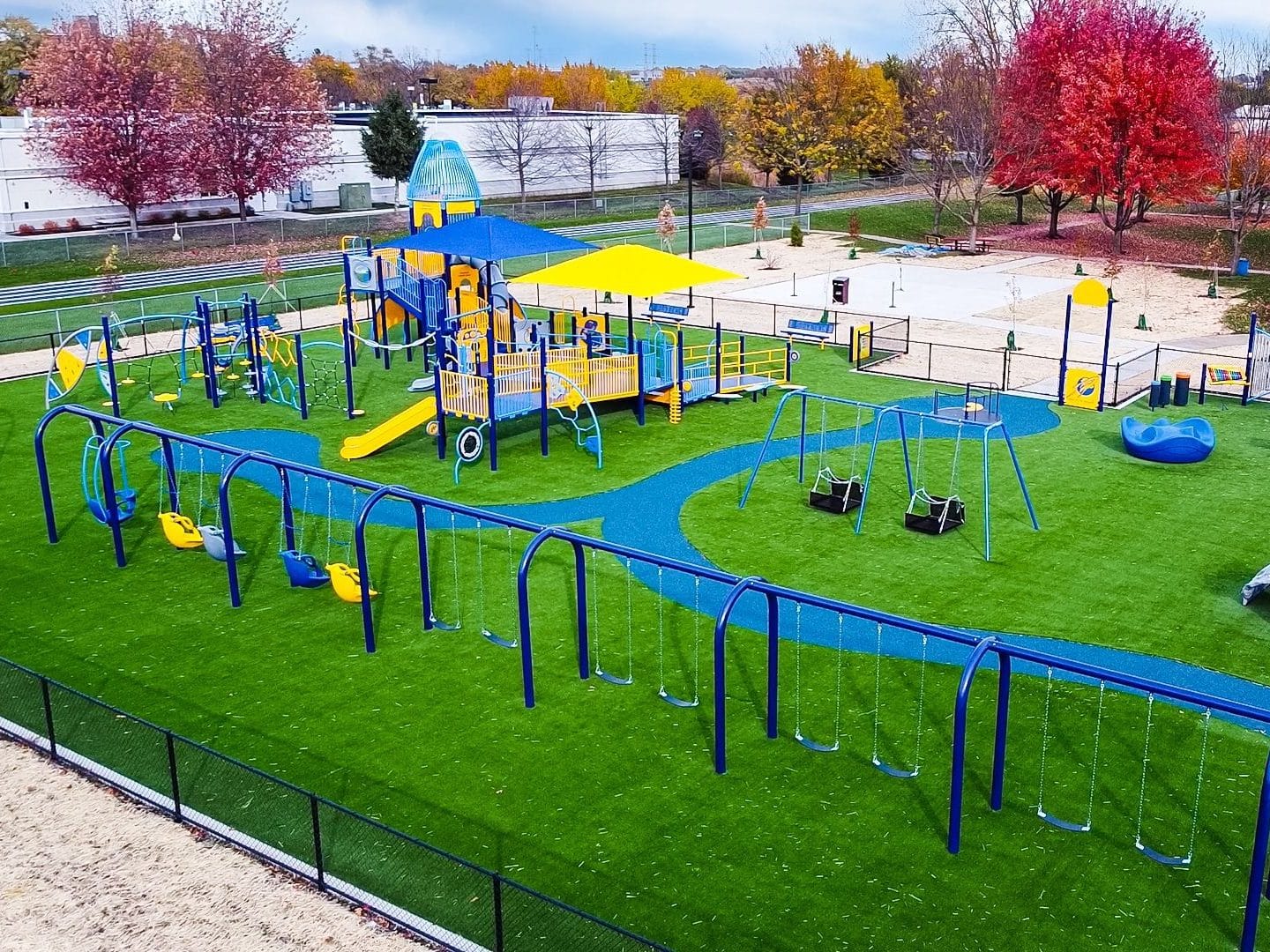
After a long, cold northern winter, most of us are eager to welcome spring. And what better way to ditch those winter blahs than with a burst of color in your yard?Wildflowers are easy on the eyes and also a natural habitat for native pollinators. This is why they’re some of the best flowers to use with synthetic turf.
Why Wildflowers?
Like synthetic turf, wildflowers are durable, maintenance-free, and can save you a whole lot of time and money. The last point is the most important. When you have turf installed and no longer need to mow or weed your lawn, most people want a flowerbed that doesn’t require much effort to maintain either. That truly frees up your weekends for what really matters in your life.
Many other flowers require lots of maintenance, which is great if you love gardening, but not so much if you’re struggling to get other household chores done, spend time with your family, and still find some time to go fishing.
That’s why wildflowers are the best flowers to use with synthetic turf. (For people who don’t want to garden at least.)
Designate a Spot
You can keep wildflowers neat and tidy by designating a spot to grow them. Native plants can be planted in strips or patches, in a raised bed, or directly into the ground. You want an authentic look, so avoid precise geometric forms. Botanists at the University of Missouri Extension warn growers not to plant wildflowers in areas where animals may run over them. Create paths for walking to ease fears of crushing the plant’s foliage.
Test the Soil
After you choose a spot, test and prepare the soil. It may need some amendments if it’s too sandy or has a high pH level. Remove any weeds or unwanted vegetation. You’ll want optimum seed-to-soil contact. After you drop the seeds, water the area so the soil is moist.
Keep a Straight, Neat Edge
Forget images of wildflowers spiraling out of control. According to environmental gardener Tim Hoover. “If you put a meadow in and let it run out to the curb, somebody’s going to hate it. But if you let a 2-foot mowed strip between, then it’s a little more acceptable.” Maintain a straight, neat edge by using borders to keep the plants in place.
This is even easier with Perfect Turf. You already have the perfect edges you need without having to dig out the weed eater or fertilizer. And you won’t have to worry about lawn weeds creeping into your wildflower beds or vice versa. It’s a perfect combination of flower and synthetic turf.
Choose Native Plants
If you use native plants in your landscaping, they’ll bloom longer and use less water. They’re easier to care for and will cost you less to maintain. Native wildflowers can be nearly as carefree as your Perfect Turf lawn.
Native plants are better at tolerating biological and environmental stresses such as insects and disease. But that doesn’t mean you can just plant them and forget about them. You still need to account for soil conditions, sun, and shade when selecting which flowers to plant. Look for wildflowers that thrive in a natural habitat similar to the conditions in your yard. Butterfly weed is a perennial that takes little effort and rewards you with pollinators in the garden.

Accessorize with Mulch
Don’t forget to put down mulch. Mulch helps protect the soil and improves soil quality. It also keeps weeds out and keeps wildflowers from getting out of control. Neatly applied mulch can enhance the contrast between beds and lawn, thus providing a cleaner-looking edge. Additionally, you can spruce up your landscaping with paved walkways, fencing, birdbaths, and garden fountains.
Adding wildflowers will only enhance the beauty of your landscaping. You’ll be able to sit back and relax while marveling at their spectacular beauty.
Original Post by Roger Fisk. Roger Fisk is a freelance journalist and landscaper. He and his two German shepherds enjoy listening to classical music while tending to the garden. All three of them enjoy chasing butterflies in the yard.



